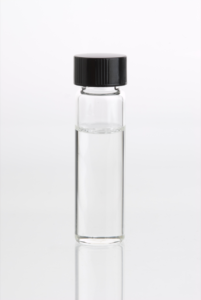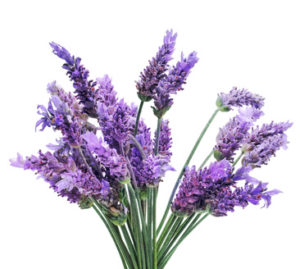 Essential oils - a whole new exciting area of research, with possible uses in animal and human health, and as an alternative to antibiotics. From The Atlantic:
Essential oils - a whole new exciting area of research, with possible uses in animal and human health, and as an alternative to antibiotics. From The Atlantic:
Essential Oils Might Be the New Antibiotics
Faced with increasingly drug-resistant bacteria, scientists and farmers are now looking to plant extracts to keep people and animals healthy.
Essential oils often evoke thoughts of scented candles and day spas, but their benefits beyond relaxation are less well-known. Essential oils are ultimately just plant extracts—and those are used in countless cleaning and personal-care products, and are the main ingredient in some pest-control products and some over-the-counter medications, like Vick’s VapoRub and some lice sprays. They’re used in the food industry because of their preservative potency against food-borne pathogens—thanks to their antimicrobial, antibacterial, and antifungal properties. Various oils have also been shown to effectively treat a wide range of common health issues such as nausea and migraines, and a rapidly growing body of research is finding that they are powerful enough to kill human cancer cells of the breast, colon, mouth, skin, and more.
A handful of promising, real-life studies have been conducted with humans and other animals, though most of the research in that realm thus far has been conducted in the lab. More controlled trials will be required before some of these applications will be available to the public, but meanwhile, scientists have turned up exciting results in another area of use: countering the growing antibiotic-resistance crisis.
As Cari Romm previously reported in The Atlantic, livestock consume up to 80 percent of the antibiotics used in the U.S., and the amount actually jumped by 16 percent between 2009 and 2012, according to a recent FDA report. This rampant use of the drugs has led to “superbugs” that are becoming increasingly resistant to the antibiotics that are used to treat not just farm animals, but humans as well. In fact, almost 70 percent of the antibiotics given to these animals are classified as “medically important” for humans...While the drugs are, of course, sometimes necessary to treat infections in livestock, the real reasons they’re overused are to speed up growth and to compensate for the cramped, unsanitary living conditions the animals endure.
Whether farmers choose to use it or not, there is a strong alternative on the horizon. Numerous recent studies—including several done by the USDA—have shown great promise in using essential oils as an alternative to antibiotics in livestock. One of their studies, published in October 2014 in the journal Poultry Science, found that chickens who consumed feed with added oregano oil had a 59 percent lower mortality rate due to ascites, a common infection in poultry, than untreated chickens. Other research, from a 2011 issue of BMC Proceedings, showed that adding a combination of plant extracts—from oregano, cinnamon, and chili peppers—actually changed the gene expression of treated chickens, resulting in weight gain as well as protection against an injected intestinal infection.
Researchers have also directly compared the effects of commonly used antibiotics with those of various essential oils. One such study, from the March 2012 issue of the Journal of Animal Science, found that rosemary and oregano oils resulted in the same amount of growth in chickens as the antibiotic avilamycin, and that the oils killed bacteria, too. Additional findings have shown that essential oils help reduce salmonella in chickens, and another study found that a blend of several oils can limit the spread of salmonella among animals. One of the co-authors of that study, Dr. Charles Hofacre, a professor at the University of Georgia’s College of Veterinary Medicine, says it’s such a new area of research that they don’t yet know exactly how the essential oils work, but “there is some strong evidence that they are functioning by both an antibacterial action in the intestine and also some have an effect to stimulate the intestinal cells ability to recover from disease more quickly–either by local immunity or helping keep the intestinal cells themselves healthier.”
Of course, there is also a dire need for alternatives to antibiotics for the direct treatment of infections in humans and animals, not only for illness prevention and growth-boosting in livestock. Research investigating the use of essential oils in humans has produced encouraging results, but such studies have been small and surprisingly rare, especially given the demonstrated success of their use in livestock. An Italian study found that a combination of thyme and clove essential oils was just as effective in treating bacterial vaginosis as the usual antibiotic treatment, and results of a study by U.S. researchers show that staph-infected wounds healed faster when they were treated with vapors of tea-tree oil than with conventional methods. Research published in December 2013 reported that a hand gel made with lemongrass oil was effective in reducing MRSA on the skin of human volunteers...
In the lab, scientists have been testing all kinds of combinations of essential oils and antibiotics, and they’re repeatedly finding that the oils—used on their own and in combination with some common antibiotics—can fight numerous pathogens, including antibiotic-resistant strains of E. coli, Staphylococcus aureus (which causes staph infection), and other common types of bacteria. Results consistently show that combining essential oils and antibiotics significantly lowers the amount of antibiotic required to do the job. For example, two recent studies showed that lavender and cinnamon essential oils killed E. coli, and when combined with the antibiotic piperacillin, the oils reversed the resistance of the E. coli bacteria to the antibiotic. Another recent study found that basil oil and rosemary oil were both effective in inhibiting the growth of 60 strains of E. coli retrieved from hospital patients. Other research has produced similar results for many other essential oils, both alone and in combination with antibiotics. Researchers believe that one mechanism by which the oils work is by weakening the cell wall of resistant bacteria, thereby damaging or killing the cells while also allowing the antibiotic in.
Gay explains that “phytonutrients” or “phytochemicals” are chemical compounds derived from plants that have a range of health benefits, “including promoting tumor killing and increased resistance to infectious diseases, and they have been used as health-promoting agents by many cultures for several millennia.” Their potency isn’t surprising when you consider that the plant compounds that make up essential oils exist in the first place to help plants protect themselves from infection, endure temperature variations, heal from damage, and repel pests.
Back on the farms, some are already putting essential oils into practice. “There are a number of companies that are currently selling plant extracts as feed additive, and large integrated producers are also adding feed additives to their rations to enhance the health of animals, especially their intestinal health, during their production cycle,” Gay says. No one seems willing to readily offer that information, though—and they don’t have to. One farmer who has talked publicly about using essential oils is Scott Sechler, owner of Bell & Evans Farms, a high-end producer of antibiotic-free poultry. Back in 2012, he told the New York Times about his use of oregano oil and cinnamon to fight infection on his farms, which now number about 140 with a total of 9 million chickens at any given time.
![]() The researchers of a recent study caution about the regular use of lavender and tea tree essential oils (e.g. in lotions or soaps) - that the oils may act as endocrine disruptors (chemicals that disrupt hormones and their actions in the body). Earlier research found a link between regular use of lavender essential oil and tea tree oil and abnormal breast growth in boys - called prepubertal gynecomastia. The condition went away after they stopped using the products.
The researchers of a recent study caution about the regular use of lavender and tea tree essential oils (e.g. in lotions or soaps) - that the oils may act as endocrine disruptors (chemicals that disrupt hormones and their actions in the body). Earlier research found a link between regular use of lavender essential oil and tea tree oil and abnormal breast growth in boys - called prepubertal gynecomastia. The condition went away after they stopped using the products.
 Over the years I have read about some oils, especially lavender and tea tree oils, as having hormone altering (endocrine disrupting) effects when used over prolonged periods of time or when someone is "chronically exposed". Especially worrisome was the possible estrogenic effects of lavender oils in shampoos, lotions, and soaps on developing children - especially boys (prolonged use leading to the development of breasts in some boys!). I just read a recently published journal study (with very interesting comments at the end), and an article in WebMD about this same topic. The condition of early breast development is called prepubertal gynecomastia in boys and thelarche in girls.
Over the years I have read about some oils, especially lavender and tea tree oils, as having hormone altering (endocrine disrupting) effects when used over prolonged periods of time or when someone is "chronically exposed". Especially worrisome was the possible estrogenic effects of lavender oils in shampoos, lotions, and soaps on developing children - especially boys (prolonged use leading to the development of breasts in some boys!). I just read a recently published journal study (with very interesting comments at the end), and an article in WebMD about this same topic. The condition of early breast development is called prepubertal gynecomastia in boys and thelarche in girls.